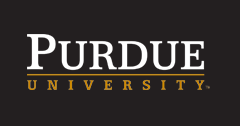Keywords
Modeling and simulation, statistical mechanics, materials science, phase transitions, stochastic processes
Presentation Type
Poster
Research Abstract
Phase transitions within large-scale systems may be modeled by nonlinear stochastic partial differential equations in which system dynamics are captured by appropriate potentials. Coherent structures in these systems evolve randomly through time; thus, statistical behavior of these fields is of greater interest than particular system realizations. The ability to simulate and predict phase transition behavior has many applications, from material behaviors (e.g., crystallographic phase transformations and coherent movement of granular materials) to traffic congestion. Past research focused on deriving solutions to the system probability density function (PDF), which is the ground-state wave function squared. Until recently, the extent to which these solutions could be verified was limited by computing power. Utilizing advanced computational resources, this work focused on verifying solutions for PDFs of sixth-order and tenth-order potentials and determining their respective autocorrelation functions. Large-scale MATLAB simulations utilizing first-order Euler discretization methods were used to model the evolution of fields at certain system “temperatures”, for which statistical PDFs and correlation functions were computed. It is anticipated that these PDF results will match the behavior predicted by analytical solutions for each system. This approach, once validated, will enable a better understanding of successive phase transitions in complex materials. In the future, it would be of interest to develop higher-order and more efficient numerical methods for simulating these system dynamics. It would also be of interest to evaluate field dynamics of higher-order potentials outside of the material science context (e.g., traffic flow) to better understand the behavior of stochastic processes in large-scale systems.
Session Track
Modeling and Simulation
Recommended Citation
Julia M. Meyer and Ivan Christov,
"Thermodynamics of Coherent Structures near Phase Transitions"
(August 3, 2017).
The Summer Undergraduate Research Fellowship (SURF) Symposium.
Paper 47.
https://docs.lib.purdue.edu/surf/2017/presentations/47
Included in
Dynamics and Dynamical Systems Commons, Partial Differential Equations Commons, Statistical Models Commons
Thermodynamics of Coherent Structures near Phase Transitions
Phase transitions within large-scale systems may be modeled by nonlinear stochastic partial differential equations in which system dynamics are captured by appropriate potentials. Coherent structures in these systems evolve randomly through time; thus, statistical behavior of these fields is of greater interest than particular system realizations. The ability to simulate and predict phase transition behavior has many applications, from material behaviors (e.g., crystallographic phase transformations and coherent movement of granular materials) to traffic congestion. Past research focused on deriving solutions to the system probability density function (PDF), which is the ground-state wave function squared. Until recently, the extent to which these solutions could be verified was limited by computing power. Utilizing advanced computational resources, this work focused on verifying solutions for PDFs of sixth-order and tenth-order potentials and determining their respective autocorrelation functions. Large-scale MATLAB simulations utilizing first-order Euler discretization methods were used to model the evolution of fields at certain system “temperatures”, for which statistical PDFs and correlation functions were computed. It is anticipated that these PDF results will match the behavior predicted by analytical solutions for each system. This approach, once validated, will enable a better understanding of successive phase transitions in complex materials. In the future, it would be of interest to develop higher-order and more efficient numerical methods for simulating these system dynamics. It would also be of interest to evaluate field dynamics of higher-order potentials outside of the material science context (e.g., traffic flow) to better understand the behavior of stochastic processes in large-scale systems.

